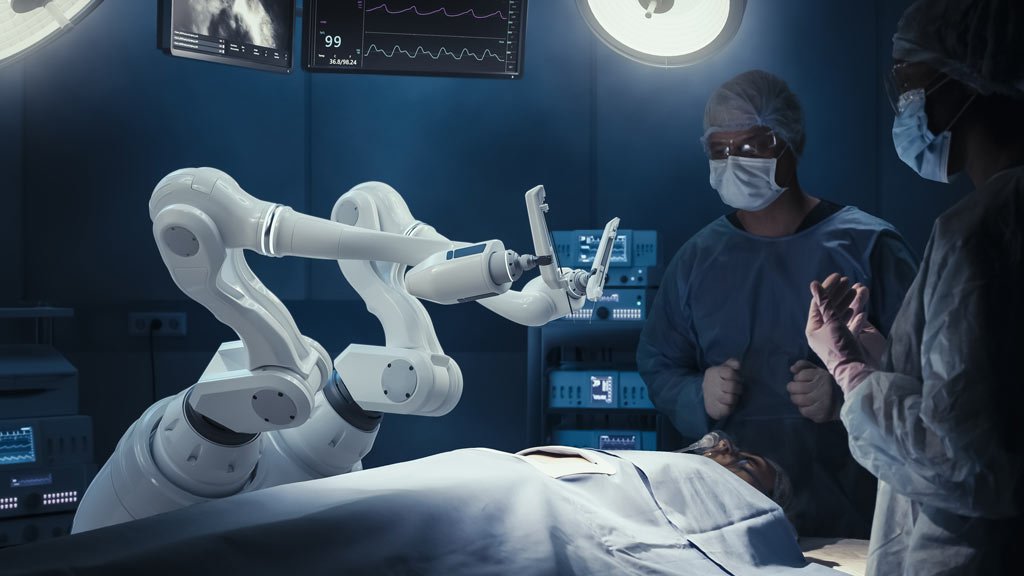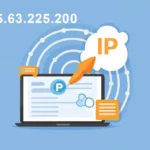The future of care begins at home
The future of healthcare isn’t in hospital waiting rooms or long lines at clinics — it’s in the comfort of your living room. How future healthcare technology elevates home care is no longer a hypothetical question. It’s a visible transformation driven by artificial intelligence (AI), Internet of Things (IoT), telehealth, and robotics — innovations that are redesigning how and where care happens. Patients today expect more than treatment; they want autonomy, personalization, and convenience. And for an aging population and a post-pandemic society, the answer is clear: home is where health begins.
By 2030, the U.S. home healthcare market is projected to reach $253.4 billion, signaling a fundamental shift in how care is accessed, delivered, and managed. From real-time vital sign monitoring to AI-powered predictive diagnostics and virtual consultations, healthcare at home is becoming smarter, safer, and more scalable — all while reducing hospital visits, lowering costs, and improving quality of life.
Inhaltsübersicht
1. The Future of Healthcare Starts at Home
Home care is not just a convenience; it’s a healthcare revolution in progress. Historically, patients had to travel for every consultation, diagnosis, and treatment. This model is being dismantled by demand for personalized, preventative, and proactive care — delivered where people feel safest: at home.
The COVID-19 pandemic accelerated the shift. Patients, especially those with chronic conditions or mobility issues, found value in avoiding hospitals. In parallel, technologies once reserved for hospitals — such as biometric sensors, cloud imaging, and AI-based diagnostic tools — became more compact and affordable.
This decentralization of healthcare delivery:
- Enhances patient autonomy
- Reduces system-wide costs
- Improves continuity of care
- Increases patient satisfaction
In 2022, 89.2% of U.S. patients reported satisfaction with home-based care models. It’s not a trend — it’s a new standard.
2. Why Home-Based Care Is Rapidly Expanding
Several powerful forces are converging to accelerate the adoption of home healthcare technologies:
Aging Population
By 2034, the U.S. will have more adults over 65 than children under 18. Elderly individuals are more likely to suffer from chronic diseases, need continuous monitoring, and prefer care in familiar environments.
Post-Pandemic Health Behavior
COVID-19 fundamentally shifted how patients interact with care systems. Remote care became not just an option, but a necessity. The result? A sustained surge in demand for remote monitoring, virtual visits, and digital prescriptions.
Technology Accessibility
What was once too expensive or complex — like remote ECGs or cloud-based EMRs — is now affordable and user-friendly. Patients and caregivers can access powerful diagnostics from tablets, wearables, and even smart TVs.
Preference for Personalized Care
Home-based models allow patients to tailor their environment, schedules, and interactions. This leads to better adherence, lower stress, and measurable improvements in outcomes.
3. Telehealth: The Digital Backbone of Remote Care
Telehealth has moved far beyond basic video calls. It is now a robust system for diagnosis, triage, therapy, monitoring, and specialist consultations. It encompasses:
- Live video conferencing
- Secure messaging and chatbots
- Asynchronous image and report sharing
- Remote prescription management
Benefits of Telehealth in Home Care:
- Reduced ER visits: By enabling rapid triage and specialist access
- Continuity of care: Especially for chronic patients who need routine check-ins
- Accessibility: For patients in rural or underserved areas
- Efficiency for professionals: Time saved from travel and redundant testing
According to the American Hospital Association, over 76% of U.S. hospitals connect with patients via telehealth platforms. The integration of AI triage assistants further improves this system, helping detect emergencies, interpret symptoms, and direct patients appropriately.
4. Artificial Intelligence in Preventive Care
AI isn’t replacing doctors — it’s empowering them.
In home care, AI is used to:
- Detect early signs of illness
- Analyze patterns from wearables and smart devices
- Adjust treatment plans dynamically
- Guide clinical decisions with predictive analytics
Examples of AI in Action:
- Fall prediction models: By analyzing gait and activity data from wearables
- Remote image analysis: X-rays, MRIs, and CT scans processed via cloud platforms
- Smart assistants: Respond to symptom questions, suggest care pathways
AI also facilitates personalized medicine. By combining genomics, medical history, and sensor data, AI can recommend individualized therapies — even from a patient’s home.
5. Connected Devices (IoT) and Remote Monitoring
Die Internet of Medical Things (IoMT) includes any connected device that captures, analyzes, or transmits health data.
Popular Devices in Home Use:
- Smart blood pressure monitors
- Bluetooth glucometers
- Wearable ECG patches
- Digital pill dispensers
- Sleep tracking rings
- Smart thermometers
These devices continuously send data to cloud platforms, AI systems, or physicians. Alerts are triggered automatically if anomalies are detected — before they become emergencies.
Auswirkungen:
- Reduced hospital admissions
- Early detection of disease relapse
- Better medication adherence
- Lower cost of care
The global IoMT market is expected to exceed $285 billion by 2029, a reflection of its central role in future care.
6. Robotics and Domestic Automation in Healthcare
Healthcare robots are no longer confined to surgical theaters. In homes, they support both mental and physical health.
Key Roles of Healthcare Robots:
- Medication reminders
- Conversation and companionship
- Mobility support
- Monitoring patient behavior and routines
Notable Examples:
- ElliQ: Designed to assist the elderly through reminders, conversations, and wellness tracking.
- Care-O-bot: Assists with physical tasks like retrieving items or helping users walk.
- Paro: A therapeutic robot shaped like a baby seal, used to reduce anxiety and loneliness.
These systems are especially impactful for patients with dementia, Alzheimer’s, or depression, offering cognitive stimulation and emotional support.
7. Digital Health Records and Integrated Coordination
A key challenge in healthcare is coordination. Digital health records — when integrated with home care — enable seamless, transparent communication.
What Digital Health Coordination Enables:
- Unified medical histories accessible by any authorized provider
- Automated updates from IoT and AI systems
- Real-time task management for home nurses or caregivers
- Cross-institution collaboration (e.g., hospitals, labs, insurers)
Solutions like HosTalky allow providers to chat, share files, schedule visits, and log care activities from any location. This drastically reduces errors, missed steps, and duplication of efforts.
8. Financial Benefits of Tech-Powered Home Care
For Patients:
- Lower total care cost: Fewer hospital visits, no transport expenses
- Reduced lost income: No time off needed for medical travel
- Affordable chronic care management: Particularly important in long-term cases
For Providers and Insurers:
- Improved resource utilization
- Fewer emergency admissions
- Shorter hospital stays
- Better treatment adherence = improved outcomes
As of 2024, CMS (Centers for Medicare & Medicaid Services) supports reimbursement for a wide range of remote services — from RPM (remote patient monitoring) to virtual therapy — encouraging broader adoption across systems.
9. Challenges and Limitations
Despite its promise, several challenges persist:
1. Infrastructure Gaps
Not all regions have fast, reliable internet. Home care Lösungen require strong broadband, secure cloud access, and sometimes even backup power.
2. Digital Literacy
Many elderly patients struggle with new tech. Training, simplified interfaces, and caregiver support are essential.
3. Data Privacy
Healthcare data is highly sensitive. IoT and AI systems must comply with HIPAA and GDPR standards. Data breaches are costly and erode trust.
4. Device Cost
While prices are falling, not all patients can afford smart medical devices. Public-private partnerships and insurance models must evolve to cover them.
10. Final Thoughts: A Smarter, Safer, Human-Centric Future
Home is becoming the new epicenter of care — and technology is the enabler. How future healthcare technology elevates home care is not about gadgets, but about impact: healthier people, empowered caregivers, and a more resilient system.
From predictive AI to connected diagnostics, from robotic assistance to virtual consultations, the transformation is real and accelerating. The next decade will not just ändern how care is delivered — it will ändern what “care” means entirely.
FAQ: Future Health Technology and Home Care
What is the difference between telehealth and telemedicine?
Telehealth covers all remote care services, including education and support. Telemedicine refers specifically to diagnosis and treatment by clinicians via technology.
What are the most useful connected devices at home?
Wearables, ECG monitors, smart pill dispensers, thermometers, WiFi-enabled scales, and glucometers are commonly used.
Are home healthcare services reimbursed by insurance?
In many countries, yes. Medicare and private insurers cover teleconsultations, RPM, and sometimes smart device costs.
Will AI replace doctors?
No. AI assists in diagnosis, monitoring, and workflow management. Human judgment remains essential.





